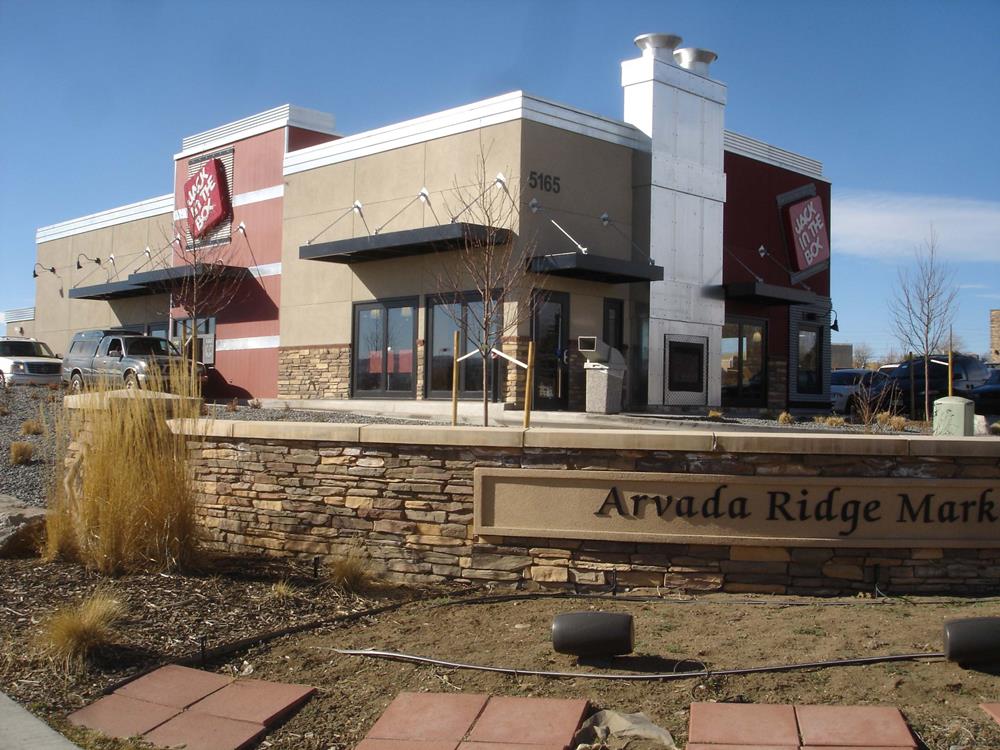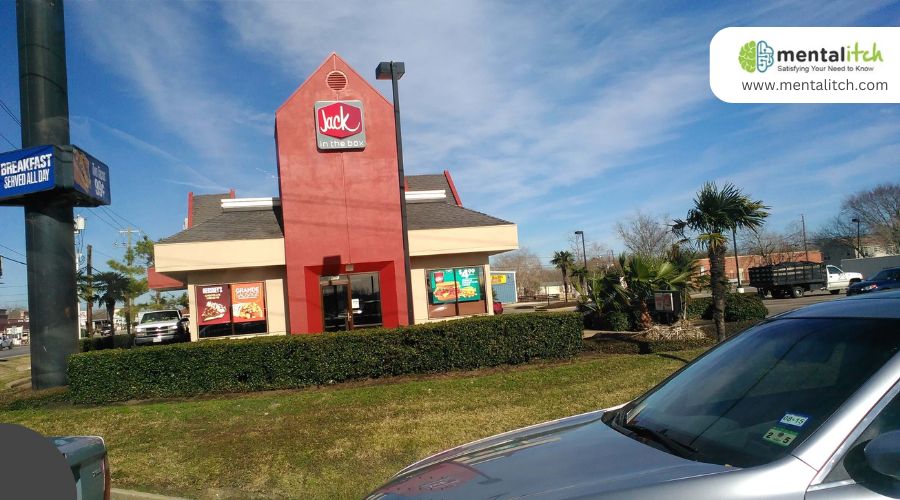In the dynamic landscape of American fast food, Jack in the Box stands out as a brand that has consistently pushed the boundaries of what a quick-service restaurant can be. Founded in 1951 in San Diego, California, by Robert O. Peterson, Jack in the Box quickly distinguished itself with its innovative drive-thru service and a diverse menu that went beyond the typical burgers and fries.
From its iconic clown mascot to a menu that includes everything from tacos to teriyaki bowls, Jack in the Box has carved a unique niche in the fast food world. This article sheds light on the journey of Jack in the Box, tracing its growth from a single hamburger stand to a major national chain, and examines the strategies that have allowed it to thrive in a competitive industry.
The Founding of Jack in the Box

The story of the restaurant’s founding takes us back to 1951, when a businessman named Robert O. Peterson opened the first Jack in the Box restaurant in San Diego, California. This wasn’t just another burger stand; it was a pioneering concept that combined the emerging drive-thru dining trend with an intercom system, allowing customers to order without leaving their cars. Peterson’s vision was to create a fast-food experience that was both efficient and entertaining.
The restaurant’s name and its iconic clown mascot, Jack, stemmed from Peterson’s desire to create a brand that was memorable and whimsical. The choice of a clown was strategic, aimed at attracting families and children, setting the chain apart from its competitors. From its inception, Jack in the Box was designed to be more than just a place to eat; it was a destination that promised fun and novelty alongside its menu offerings.
Peterson’s initial restaurant at the corner of 63rd Street and El Cajon Boulevard was the beginning of what would become a fast-food empire. It featured a giant clown head through which orders were placed, embodying the brand’s playful spirit.
The Iconic Jack in the Box Mascot
Initially conceived as a symbol to attract attention to the novel drive-thru concept, the Jack character quickly evolved into the face of the brand, embodying its playful and unconventional approach to fast food.
The original mascot was a literal “jack in the box,” popping out from atop the restaurant’s roof, drawing the eyes and curiosity of passersby. This not only served as a novel form of advertisement but also marked the establishment as a place where fun and food went hand in hand. Over the years, Jack has undergone several transformations, reflecting changes in the company’s marketing strategies and the cultural zeitgeist.
In the early 1980s, in an attempt to mature the brand’s image, Jack was briefly retired. However, his absence was felt among patrons, and recognizing the mascot’s enduring appeal, the company reintroduced him in a big way in 1994. This revival, marked by the explosive “Jack’s Back” campaign, featured Jack blowing up the company’s boardroom in a symbolic move to reclaim the brand’s direction. From then on, Jack, now sporting his signature business suit and ball head, has taken on a more prominent role, serving as the company’s CEO in advertising campaigns.
Jack in the Box in the 60s and 70s

By the mid-60s, Jack in the Box had expanded its operations to several other states, including Arizona and Texas, showcasing the brand’s ambition to reach a wider audience.
This era also witnessed Jack in the Box’s bold foray into menu innovation, a move that set it apart from its competitors. In 1964, the chain introduced the first-ever breakfast sandwich to the fast-food market, the now-iconic Breakfast Jack, which became a staple for morning commuters and breakfast enthusiasts alike. This period also saw the introduction of other menu items that would become synonymous with the brand, such as the Jumbo Jack, a larger burger option that catered to the growing consumer demand for bigger, more satisfying meals.
The 1970s brought further growth and diversification. Amidst the backdrop of a rapidly evolving fast-food landscape, Jack in the Box continued to push the boundaries of the conventional fast-food menu. The brand introduced taco offerings, an unusual move for a primarily burger-focused chain, which unexpectedly became a hit and remains a beloved item to this day.
Jack in the Box’s marketing strategies also evolved during this time. The brand leveraged its mascot, Jack, to connect with audiences in a more personal and humorous way, setting the tone for future advertising campaigns that would often feature witty, tongue-in-cheek humor.
By the end of the 70s, Jack in the Box had firmly established itself as a major player in the fast-food industry, known not just for its diverse menu and innovative offerings but also for its unique brand personality.
The Expansion of Jack in the Box in the 80s and 90s
In the early 1980s, Jack in the Box made the strategic decision to venture beyond its traditional West Coast stronghold, targeting new markets in the Midwest and Southeast. This expansion strategy was part of a broader vision to become a national brand, reaching new customers and diversifying its geographic footprint. However, this ambition also presented challenges as the brand navigated the complexities of appealing to diverse regional tastes and preferences.
The 1990s brought significant changes to Jack in the Box, both in terms of branding and menu innovation. In a bold move to rejuvenate its image and reconnect with its customer base, the company launched the “Jack’s Back” campaign in 1994. This campaign marked the return of the brand’s iconic mascot, Jack, reintroducing him as the company’s fictional CEO. The campaign was a turning point, revitalizing the brand’s image with humor and a renewed focus on quality and innovation.
During this time, Jack in the Box also embraced menu diversification as a key strategy. Recognizing the growing consumer demand for variety and healthier options, the brand expanded its menu to include a wider range of items, including salads, chicken tenders, and unique limited-time offers. This approach helped differentiate Jack in the Box from its competitors, offering customers a broader selection of choices beyond traditional fast-food fare.
The 80s and 90s were also a period of technological advancement and operational improvement for Jack in the Box. The brand invested in new kitchen technologies and systems to improve efficiency and food quality. These investments underscored Jack in the Box’s commitment to providing a superior dining experience, aligning operational capabilities with customer expectations.
Jack in the Box in the 2000s and Beyond

In the early 2000s, Jack in the Box focused on enhancing its menu with an emphasis on variety and healthier options. This period saw the introduction of innovative products such as the Sirloin Burger and the Ultimate Cheeseburger™, aiming to cater to a broader range of tastes and dietary needs. These menu additions were complemented by limited-time offers that kept the menu fresh and exciting for returning customers.
A significant milestone in this era was the 2004 launch of Jack’s Spicy Chicken with Cheese, showcasing the brand’s commitment to menu diversity and flavor innovation. This move was part of a broader trend within the fast-food industry towards offering more diverse and spicy flavor profiles, and it helped Jack in the Box to stand out among its competitors.
Recognizing the growing importance of technology in the dining experience, Jack in the Box also invested in digital platforms and mobile technology. The launch of its mobile app and online ordering system provided customers with greater convenience, allowing for easy access to the menu and seamless ordering options. This digital transformation was aligned with the brand’s customer-centric approach, aiming to meet diners where they were: online.
In response to the competitive environment, Jack in the Box also undertook significant brand refreshes in the 2010s, aimed at modernizing its image and enhancing its appeal to a younger demographic. This included updates to the mascot, Jack, ensuring that he remained a relatable and engaging figure in the brand’s marketing efforts. The refresh extended to restaurant designs, adopting a more contemporary aesthetic to improve the dining experience and attract a broader customer base.
Interesting Facts About Jack in the Box
Beyond its signature burgers and iconic clown, there are several lesser-known facts that add to Jack in the Box’s rich history and unique character. Here’s a look at some intriguing tidbits about Jack in the Box that might surprise even the most loyal customers:
- First Major Chain with a Drive-Thru: Jack in the Box revolutionized the fast-food industry in 1951 by introducing the first drive-thru window, complete with an intercom system, making it easier for customers to order and receive their food without leaving their cars.
- Innovative Menu Items: The chain was one of the first fast-food restaurants to break the conventional burger and fries mold by offering a varied menu, including tacos, egg rolls, and even teriyaki bowls, catering to a wide array of tastes.
- Taco Sales: Despite being a burger chain, Jack in the Box sells more than 554 million tacos every year, a testament to their popularity and the diverse appeal of the menu.
- Secret Sauce Recipe Change: In the late 1980s, Jack in the Box quietly changed the recipe of its secret sauce, a move that went largely unnoticed but marked a significant shift in the flavor profile of its burgers.
- Advertising Pioneer: Jack in the Box was among the first fast-food chains to target specific demographics through its advertising campaigns, including a memorable series of ads in the 1990s that featured the fictional CEO, Jack, as the protagonist.
- Mascot Evolution: The Jack mascot has undergone several redesigns over the years, from a clown atop the restaurant’s roof to a suave, business-savvy CEO with a ping pong ball head, reflecting the brand’s evolving identity.
- Food Truck Innovation: In 2013, Jack in the Box launched its own food truck, named “Jack’s Munchie Mobile,” serving up favorites at events and festivals, showcasing the brand’s adaptability and outreach efforts.
- Meatless Options: Keeping up with changing dietary preferences, Jack in the Box introduced its first-ever meatless burger option in 2019, catering to vegetarians and those looking for alternative protein sources.
- 24/7 Service: Many Jack in the Box locations operate 24/7, offering a full menu around the clock, a feature that distinguishes it from many other fast-food chains that have limited late-night or early-morning options.
- Unique Commercials: The brand is known for its innovative and sometimes controversial commercials, including the infamous “Jack’s Back” campaign, which played a key role in reviving the mascot and rebranding the chain in the 1990s.
Conclusion
From its inception in 1951 as a pioneering drive-thru restaurant to its current status as a beloved national brand, Jack in the Box has consistently pushed the boundaries of what a fast-food restaurant can be. With a mascot that has become as iconic as the menu items, the brand has navigated the ups and downs of the industry with a blend of innovation, humor, and resilience.

